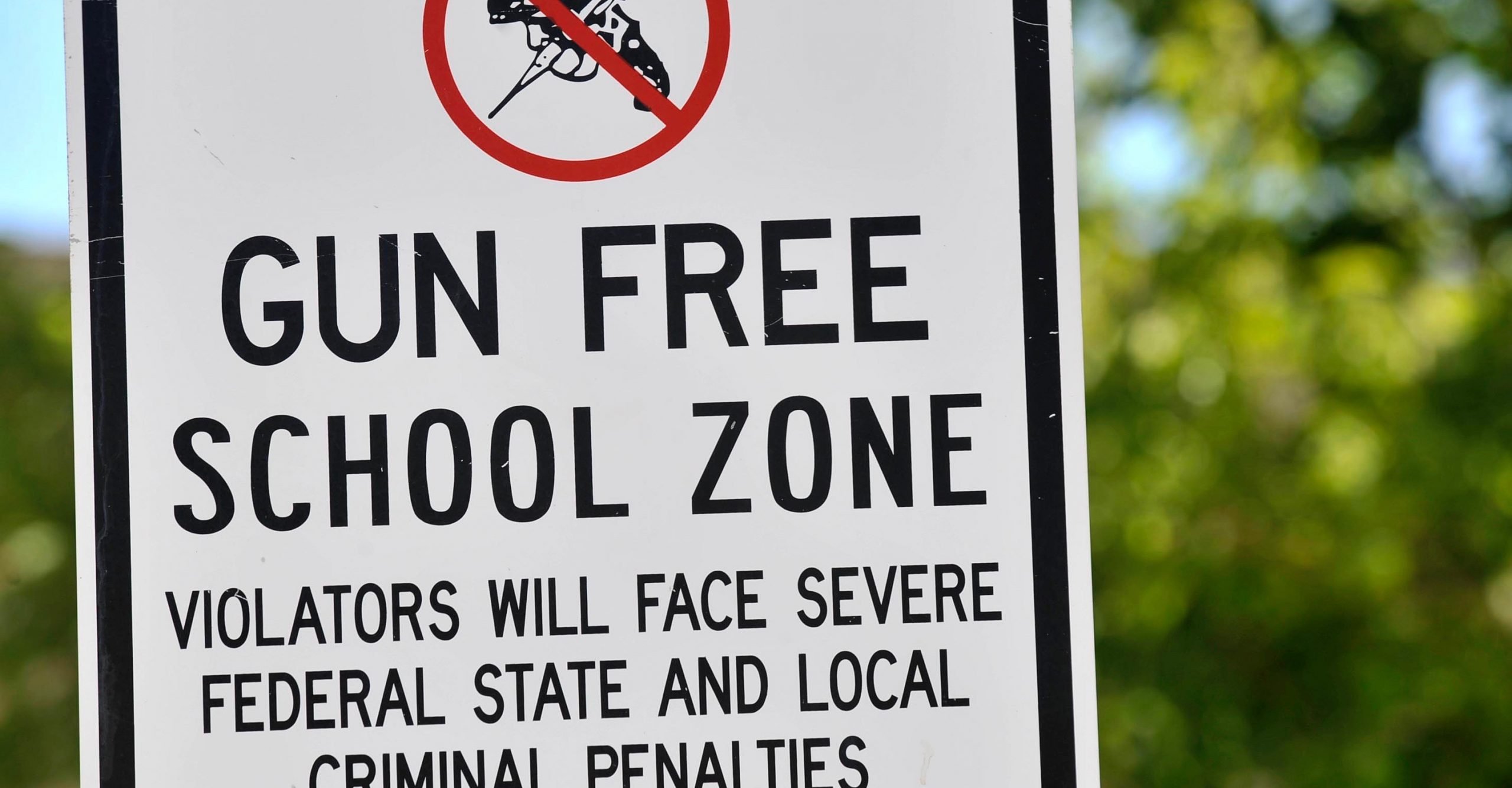As a presidential candidate, Donald Trump vowed to make Americans safer from attacks like those that left scores dead in Paris, San Bernardino, and Orlando. Eliminating restrictions that bar people from carrying guns places where firearms are currently banned, he frequently declared, is key to that strategy.
“I will get rid of gun-free zones on schools, and — you have to — and on military bases,” he said at a rally in Burlington, Vermont, in January. “My first day, it gets signed, okay? My first day. There’s no more gun-free zones.”
His promise resonated with his conservative base. The National Rifle Association has made doing away with gun-free zones a top priority, characterizing them as a “horror” that give criminal madmen and terrorists license to “destroy innocent lives unchallenged.” In the wake of the Sandy Hook Elementary School shooting, 64 percent of Republicans said they supported allowing teachers to carry guns in schools.
But the reality of what it would take to dismantle the myriad laws and rules that have established the zones is far more difficult than Trump has made out. For starters, a president can’t simply order them out of existence by executive action, as Trump has implied. The United States Congress, senior military leaders, state legislatures — even private business owners — would all have a say.
Here’s why.
Trump can’t erase the laws that protect gun-free zones in schools without the help of Congress.
The Gun Free School Zones Act of 1990, introduced by then-Senator Joe Biden, prohibits a person from possessing or discharging a firearm within 1,000 feet of public or private school grounds. This rule excludes gun owners who have been permitted to carry concealed weapons after going through an application and testing process in their state. The measure had such tremendous support that it passed the Senate without a roll-call vote. In the House, just one Republican voted against the measure.
The Supreme Court struck down the act after a challenge claimed Congress had overstepped states’ authority in enacting it. But Congress redrafted the law in 1996, with minor modifications, and it has withstood other challenges made since then.
In Congress, there simply hasn’t been much appetite for repealing the law, even among Republicans. Bills have been introduced that would eliminate the restrictions, but they have never made it out of committee, according to Joseph Blocher, a law professor at Duke Law School. “I don’t see a lot of energy in that direction,” he told The Trace.
It was the military, not political leaders, that created the rules banning guns on bases.
The Department of Defense issued an agency rule in 1992 — during George H.W. Bush’s administration — that prohibits civilians and military personnel who are not on security duty or participating in a law enforcement investigation from carrying guns on military sites. Versions of the rule had already existed for several decades.
Military bases became a flashpoint in the gun-free zones debate after shootings at Fort Hood in 2009 and 2014 claimed 17 lives. In 2015, a shooter killed five people at a recruiting center and a Navy Reserve center in Chattanooga, Tennessee, fueling more opposition to the policy. Gun rights supporters said the attacks could have been prevented by an armed bystander.
While a Trump-selected Secretary of Defense could try to reverse rules governing guns on military bases, he or she would likely face staunch opposition from other senior military officials. “No one ‘disarmed’ the military — the military itself prefers to manage good order and discipline by not having everyone armed,” Steve Bucci, a former Army Colonel told PolitiFact.
Lieutenant General Mark Milley, the U.S. Army Chief of Staff who served as the commanding general at Fort Hood, said in April that allowing people to carry concealed weapons onto military bases as a means of thwarting attacks was unnecessary. “We have adequate law enforcement on those bases to respond,” he said.
Even though Trump can’t get rid of federal gun-free zone laws and rules, he can undercut their effectiveness by choosing not to enforce them.
While it might be difficult to wipe laws off the books, a president can influence whether agencies enforce existing statutes.
Trump, for example, could instruct the Justice Department not to charge people for violating of the Gun Free School Zones Act. Prosecutions under the existing law are already rare.
He could also work with Congress to weaken the law without repealing it, experts say. Congress could require schools to allow guns as a condition of receiving federal aid, for example.
Trump can’t get rid of the many gun-free zones controlled by states and private property owners.
While some states, like Georgia and Texas, have rolled back bans on carrying firearms in some public places, many restrictions still exist. Many states bar guns from courthouses, schools, and parks. These state statutes would remain in place even if Trump succeeds in chipping away at federal laws and rules.
Even more removed from the power of the presidency are rules set by private property owners, who decide whether to ban guns in places like movie theaters, shopping malls, and convenience stores. There’s nothing a president — even Trump — can do here. And he might not even really want to. Some of the properties Trump owns, like Mar-a-Lago and the Trump Winery in Virginia, are themselves gun-free zones.
[Photo: AP/Amarillo Globe-News, Michael Schumacher]

